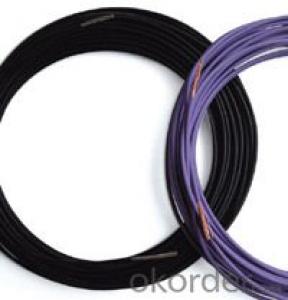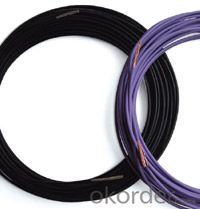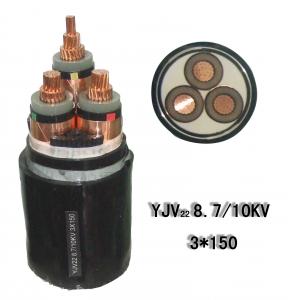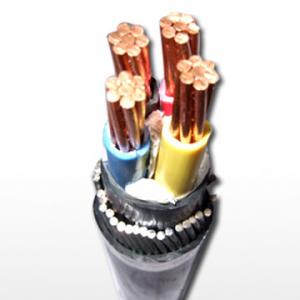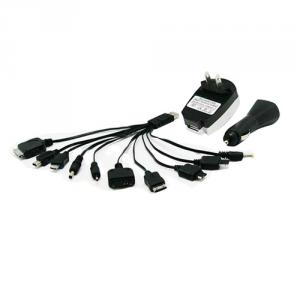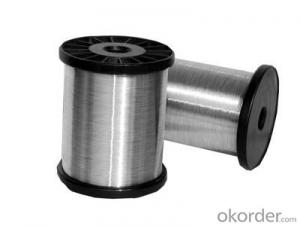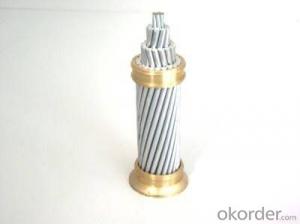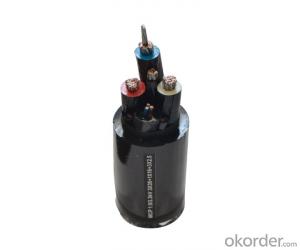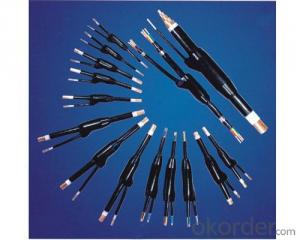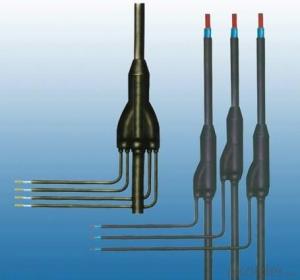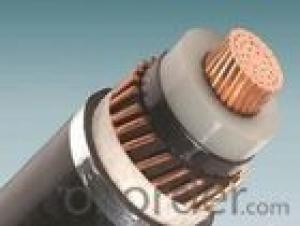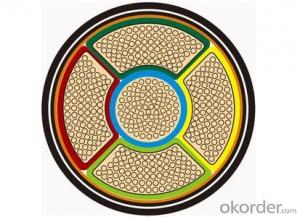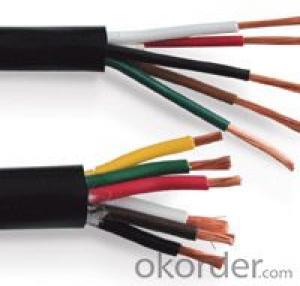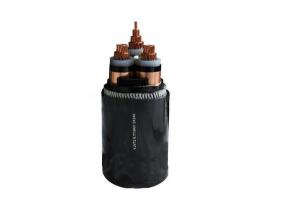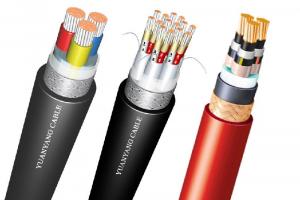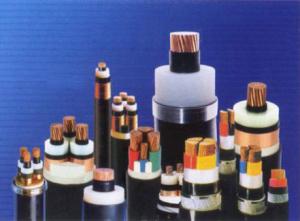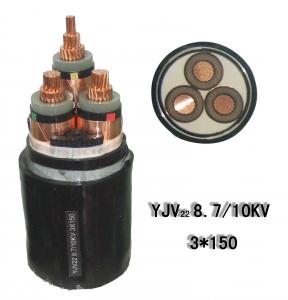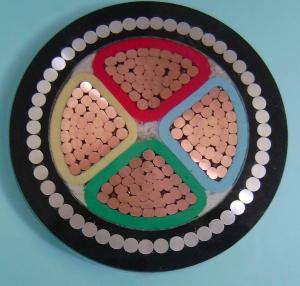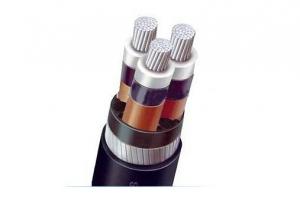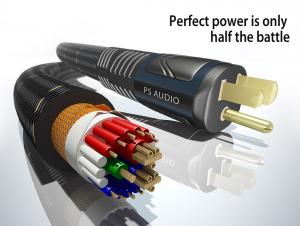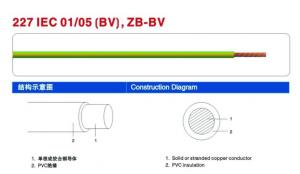Low Voltage Primary circuit Cable for Automobiles
- Loading Port:
- Shanghai
- Payment Terms:
- TT OR LC
- Min Order Qty:
- 100 m
- Supply Capability:
- 100000 m/month
OKorder Service Pledge
OKorder Financial Service
You Might Also Like
Low Voltage Primary circuit Cable for Automobiles
Type and Designation
Type | Designation |
TWP | Thin Wall Thermoplastic insulated cable for automobiles |
GPT | General Purpose Thermoplastic insulated cable for automobiles |
HDT | Heavy-duty Thermoplastic insulated cable for automobiles |
STS | Standard-duty Thermoset elastomer (Synthetic rubber) insulated cable for automobiles |
HTS | Heavy-duty Thermoset elastomer (Synthetic rubber ) insulated cable for automobiles |
TXL | Thin wall cross-linked polyolefin insulated cable for automobiles |
GXL | General purpose cross-linked polyolefin insulated cable for automobiles |
SXL | Special purpose cross-linked polyolefin insulated cable for automobiles |
TWE | Thin Wall Thermoplastic Elastomer insulated cable for automobiles |
GTE | General purpose Thermoplastic Elastomer insulated cable for automobiles |
HTE | Heave-duty Thermoplastic Elastomer insulated cable for automobiles |
Description of the Purpose
Little affected by the environment, the cable is flexible and resistant to abrasion, oil, heat and cold, mainly used in the low-voltage system of below 50V rms of automobiles
Standard
SAE J1128-1995
- Q: My cousin gave me his old xbox but hes lost the cables so i asked one of my friends for his xbox cables to see if it still works and when i tried plugging it in the power wouldn't go in the xbox my cousin has is a halo 3 limited edition which is either an arcade or hes taken the hardrive and my question is, do all xbox-es have the same Cables for power etc and if not were can i get the right power cable for this console preferably bought in the uk
- The 360's power supply is actually 2 parts. First is the cable that actually plugs into the wall. This is identical across all 360s, however the wall plug differs from country to country. Normally you can just get an adapter from the electronics store for this. However, the second part (the brick) is very different. First it differs depending on the country you're in, and then it differs depending on the specific model of 360 your have. Newer models don't need as much power, so their bricks output a lower amount of DC current. Also, the electrical system differs from country to country. In the US for instance, the power system runs on 120V but in most of Europe (including the UK) it's 220V. I do not know if the bricks are capable of adapting to both power systems. If not, plugging power brick from the US into the wall in the UK will damage the power brick and maybe even the 360. The Halo3 360 is one of the older models, while the Arcade is one of the newer ones. You may have damaged your 360 because the power brick sent too much power into the 360. You'll have to call Microsoft's support line so you can read the exact model numbers off the 360 and power brick to determine if they're compatible. They can probably also help you with obtaining a new cable or brick as well.
- Q: I need to run power cables from 4 fans on my stacker 830 around the edges of the case and into the power supply for cable management purposes. The fans I currently have, have power cables that are around only 10 inches long. Any ideas?
- Can you solder? If so, just clip the wires then splice on extensions. Add heat-shrink material, solder connections, shrink the material and you're good to go.
- Q: I have a Maxtor 3200 and I accidentally plug in the wrong power cable for it. I saw the light flicker on then off. I realized my mistake and tried to plug it in its correct cable but now it won't turn on at all. I figure that the wrong cable must of forced too much energy through it. I have a lot of important files on there. I know that fixing it won't be cheap, I fully realize that. However, is there any hope of retrieving my files at all?
- You will be able to get your files back as they are magneticly stored on the harddrive not electronicly, as far as fixing it yourself, you could try opening the plastic shell and retrieving the harddrive itself from inside and hook that up to your pc if you know how.
- Q: What is the outer diameter of the copper cable 3 * 25 + 2 * 16? What is the cable diameter of 4 * 50 + 1 * 25?
- Dual-screen display expansion, but it is estimated that the graphics card is not too small to see the movie line also play the game at the same time ~!
- Q: I'm referring to the older models of both the PS2 and PS3, not the slim models.
- The USB adapter works for me. On some video games like Soul Calibur you are able to press the analog button previously the controller will initiate working, and it gets fussy some situations having to unplug it and placed it back in.
- Q: The power supply in question is
- Yes, they all do. regards, Philip T
- Q: im hooking up a system in my truck..im doing it the redneck way they way i have watched my dad do it many of many of times. im using jumper cable wire!! yes jumper cable wire, its plenty of juice the perfect size! but im not sure if he ever used a fuse link.do you have too? what if i dont use one? if so where is the cheapest place to get it?what size fuse is it?
- so in theory you want to make sure the wire you are using can handle the the same amount of amperage as the amp or more
- Q: recently i purchased an imac G4, it included everything)keyboard,speakers,mouse ect.) but, it didnt come with a powercable. i knew this when i bought it, but thought it was a standard connector,i was wrong, it is a 3 pronged connector, I have a cable that will fit, but it is only 2 prongs, (it's missing the ground pin) . i only can return this item in 4 days if there is a problem with it, i could buy a powercord, but i risk it not coming in time. Can i use my 2-pronged power cord just to test it's funcionality. (fans,chime etc.) without the computer catching on fire of any other type of failure.Chris
- It's an ordinary 3-pin PC power cable. Any desktop, screen or printer should use one. If you don't have one, you should be able to easily find one for ?5.
- Q: in my efforts to make everything as simplified as possible (lazy) im looking for a 25' or longer sata cable (also if there is an extension to the power cord thats used to power a cd drive in a desktop) trying to mount the cd drive all the way on the other side of the room (5ft away lol) so that i dont have to get up to change dvds. id mount it to the dvd shelf which is next to the sofa.
- No go: What is the maximum length of a SATA data cable? 1m for SATA I, 2m for SATA II The exercise will be good for you. Maybe you have a wife, or a sister?
- Q: Most systems are about 1 thousand watts, the red power cable is really thick but then the speaker wire is really thin about 12 gauge, shouldn't the speaker wire be as thick as the power cable?
- Hello Not with standard car speakers. If you fit uprated car radio equipment then yes you may need to replace with higher rated wires Andy C
Send your message to us
Low Voltage Primary circuit Cable for Automobiles
- Loading Port:
- Shanghai
- Payment Terms:
- TT OR LC
- Min Order Qty:
- 100 m
- Supply Capability:
- 100000 m/month
OKorder Service Pledge
OKorder Financial Service
Similar products
Hot products
Hot Searches
Related keywords
